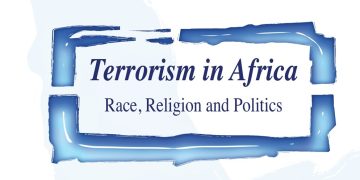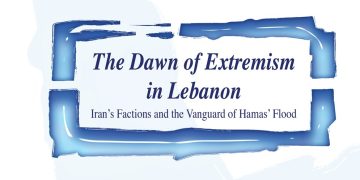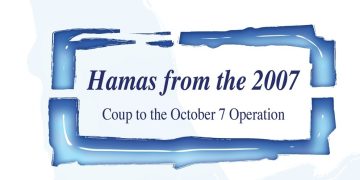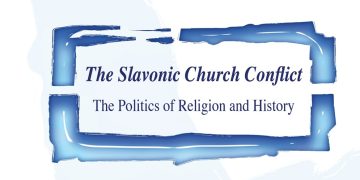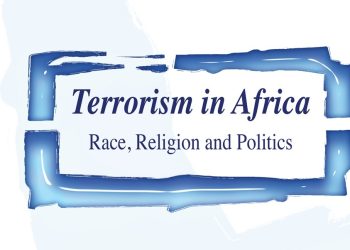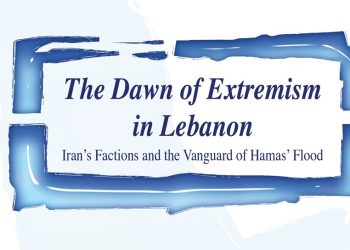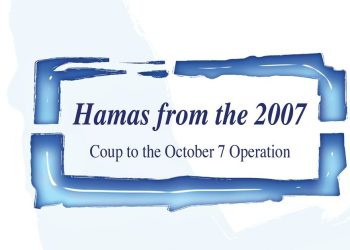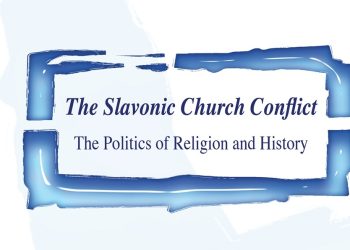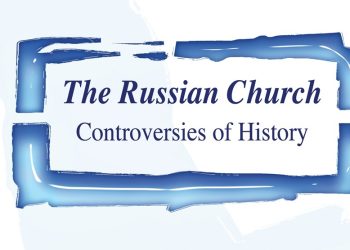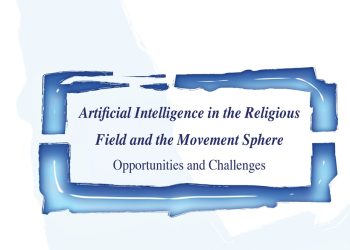Back on May 16 I wrote here about the “good news from North Africa.” My main point was that, despite fluid circumstances and uncertain prospects, civil society energies were alive and well in both Algeria and Sudan.
That alone cannot–and in these cases still has not–guaranteed positive outcomes, of course; it never does, because civil society engagement is a necessary but not a sufficient condition for genuinely transformative progress in a nation’s political arrangements—as opposed to a mere coup at the top. But societies with no detectable civil pulse rarely reform in sustainable ways, except when major external shocks force the issue. Historical example: The Napoleonic invasion of Egypt in 1799 shook the Mameluke cage apart; no invasion, no Mohammed Ali and no Ibrahim Pasha, and al-Mesbar readers know the rest.
If anything, things look better now in both Algeria and Sudan than they did six months ago. The Sudanese movement has made real progress; there is agreement on a new constitutional arrangement. What there is not is deep trust that the military government side will keep its promises. The Algerian movement has achieved less dramatic results, but the protests are now in their 41st week, demonstrating surprisingly serious tenacity. And now there has been mounting more good news from another part of the MENA region, perhaps inspired by the events in Algiers and Khartoum.
Following unexpected (and since crushed) protests against corruption and repression in late September in eight Egyptian cities, demonstrations erupted in Lebanon and Iraq in October and have yet to surcease. The Egyptian, Lebanese, and Iraqi events bear some characteristics in common with what happened in Algeria and Sudan six months ago, and all five cases bear aspects in common with the clutch of so-called Arab Spring upheavals that began in December 2010. There are also obviously many differences among the cases.
But the stand-back-and-look takeaway here is that generational change, its political impact magnified by the spread of technological post-modernity, is remixing the perennial cycles and clashes of dawa and mukhabarat throughout the region. Hope is rising that, in some cases, the cycle itself will be not just remixed but finally ended in favor of more stable, participatory, and hence more legitimate political orders–the kind of new order that is struggling to emerge where it all began nearly nine years ago, in Tunisia.
Those who wish the region’s people well do so not least for its own sake. Only a fool takes delight from the sufferings of others. But a further and more pragmatic motive exists as well: Progress toward selective functional regional integration that would benefit all local protagonists cannot likely go forward unless the constituent parts of the region–namely, the senior state decision-making units in national capitals–can drag their countries off the pavement and get their governance acts together. Put a bit differently, more useful coherence cannot come to the region unless the constituent parts become more usefully coherent first.
As it happens, the region desperately needs a heavy dose of selective functional integration for two basic, interlinked reasons.
The first reason concerns a major shift underway in the global international security order caused by the retrenchment of the U.S. Government from the international strategy that has guided it since World War II. The world is now tending toward a new, as yet undefined form of balance-of-power/spheres-of-influence system. In some respects, the new constellation of geopolitical rivalry will resemble earlier, 19th-century versions, and in others it will differ; but one thing will surely remain the same: Small powers–even well-governed ones–will labor under a generic disadvantage. As before, the great powers will tend to be the diners at the table and the small powers will tend to be the entrees. All the nations in the MENA regional subsystem are to one extent to another small powers. They need to support each other to make themselves less accessible fare to potential predators, whether those predators are very large and far away or not so large but much closer to home.
Let’s concretize things: If Iraq had invaded Kuwait not in August 1990 but in August 2019, by which time it had become apparent that the U.S. Government would not even exercise its responsibilities to the global commons in the Strait of Hormuz, no one would have expected anything like Operation Desert Storm to occur. Kuwait would already be the 19th province of Iraq, and no one would be prepared to do anything about it beyond what the so-called international community has done about the summary Russian annexation of Crimea. Which is to say as close to nothing as possible.
A second, related reason, is economic. No culturally contiguous region of the world trades less across its borders than does the Middle East. The typical explanation for that fact used to be that the economies of the Arab states are not complementary; since they all produce and consume pretty much the same things, there is no variance for comparative advantage to do its wondrous work. There is something to this explanation, but a far more likely one lies with the rentier arrangements fostered by many of the region’s de facto oligarchical regimes. However it happened, the MENA region is far less than the sum of its parts economically. Wealthy countries rarely help poorer ones to develop, except occasionally with political strings attached, despite its being in their enlightened self-interest to do so. Why?
Because general economic stagnation and stark inequality among regional countries encourages hidebound and revisionist ideologies and, in extreme cases, leads to social breakdown and war, as we have seen in recent years in Syria, Yemen, and elsewhere. Those wars can and have affected not only poor Arabs but richer ones across borders as well. Economic underperformance also conduces to the underfunding of education, research and development, and sectoral investment in construction and industry that simultaneously generate jobs and push human capital development up the value-added chain. Under such dire circumstances, elites tend to steal according to rank—the classic definition of kleptocracy. In many countries divided by sectarian or ethnic cleavages, the stealing is generally parallel and competitive. Iraq since about 2012 is an excellent, if deeply sad, example.
* * *
The reason for both the self-induced security isolation and economic backwardness of most MENA states is as simple as it is profound: It is the lock that zero-sum thinking has had on the Arab mind (and of course other minds, as well, but they fall outside our ambit of interest here).
This is a lock whose deepest basis is to be found not in culture, which for this region is to say religious culture. On the contrary: From the beginning the central impulse of Islam has been one of integration, one of overcoming petty local animosities to build a greater umma based on unity in faith. If Mohammed had hired a public relations specialist in the late 6th century, he (or she) probably would have come up with something similar to the chorus lyric of a 1969 Beatles hit: “Come together, right now, over me.”
No, the zero-sum mentality has its deepest origin in social structure, not culture. Its roots lie in the region’s tribal and clan structures whose origins go back into the mists of time, and it is mainly from these roots that the political cultures of Arab countries have sprouted. Again, this is not because of Islam but despite Islam—and it is also despite the local realpolitik manipulations that a secularized version of the umma under the label pan-Arabism underwent during the 1960s and 1970s.
This is why the recent upheavals in Lebanon and Iraq are so interesting, and potentially so important as harbingers of a better future for those two countries and for the entire region. Despite different contexts and historical path dependencies, the demonstrations in Lebanon and Iraq have three related characteristics in common.
First, they are both anti-sectarian and pro-integrationist in national terms. Note that in these cases an aspiration to modern nationalism is not regressive. Nationalism is progressive compared to para-federal feudal patrimonialism in Lebanon. It is even more so compared to Iraq’s pre-Weberian tribalism. Even if neither of these nationalisms comes to consistently manifest what Westerners would consider liberal values, it would still mark relative progress. Alas, these things really are relative, not universal. But the very fact that both protest movements reject narrow identity politics is a good start toward a liberal project, for it runs directly against the grain of the nativist populist pulse in many Western countries nowadays.
Second, both protest movements identity an external actor, the Iranian regime, as a key source of their complaint. In both cases Shi’a youth, in particular, are making the difference by reacting against reactionary and foreign-influenced Shi’a forces, the government itself in Baghdad (well documented by Iraqi pollster Munqith Dagher), Hizballah and Amal in Lebanon. This illustrates, as I asserted in September 2014, that “. . . Arab blood is thicker than Shi’a water.” [https://www.the-american-interest.com/2014/09/11/do-we-have-a-strategy-now/]. There are natural antibodies to Iranian influence in the Arab world, and we are seeing them at work now.
And fourth, they are both more sophisticated in terms of their methodology than were their forbears nine years ago. That greater sophistication expresses itself in several ways, but the essence of it is that it rejects both the fantasy of instant results and the zero-sum mentality. Let’s take a closer and deeper look at the two cases.
* * *
To put being a Lebanese national above being a Sunni or a Shi’i or a Maronite is to say that cooperation can create more than the sum of the parts. It transforms us against them and them into we together with them and them. It is a revolutionary idea in the Lebanese context, and that idea is what is animating the current protests, which quickly got rid of Prime Minister Saad Hariri on October 29. Turning that idea into a revolutionary reality is something else again.
Lebanon is a very odd duck as modern states go, and was designed to be from the start. It was constructed deliberately to lack several key attributes that modern states tend to have: a national army and police force whose writ runs over the entirety of its national territory; a treasury that collects taxes and a bureaucracy that provides services at national scale; and political parties that compete to represent the population in the legislative branch of government on the basis of programmatic desiderata defined in terms of a national interest. Lebanon was assembled as a federal sectarian feudalist system, with real power residing at sub-state communal levels and with national institutions mostly weak and generally subordinate to local ones.
This arrangement, which flowed from the tenured realities of the Ottoman millet system, worked well enough from around 1946 to 1957-58, when it faced a crisis inherent in its design: the porosity of the state before larger trends outside its borders. Crises that led to the near collapse of Syria and its temporary absorption by Egypt into the short-lived United Arab Republic, and to the Iraqi Revolution of July 1958, nearly swamped Lebanon in a wave of pan-Arabist, essentially Sunni, enthusiasm. Its problem was one of asymmetry: One of its three main confessional grouping sprawled across its borders, but the other two really did not.
Lebanon barely survived the 1957-58 Levantine upheavals, thanks in some part to the only overt expeditionary military deployment of the Eisenhower presidency; but it succumbed to the next challenge: the PLO’s upsetting of the Lebanese applecart in 1975. The ensuing civil war and Syrian intervention, and subsequent Israeli incursions both political and military into Lebanese affairs, destroyed the delicate balance of the confessional system. The emanations of the Iranian Revolution after 1979 and the political incandescence of Lebanon’s Shi’a population have since warped the original design into an unrecognizable tangle of dysfunction. Lebanon is stuck: It can’t go back to a system that was never viable for the longer run anyway, and it can’t go forward because the country suffers from both a lack of any natural majority and the predations of an external actor working through a sectarian-affiliated local power: Hizballah.
Some have imagined a new Lebanese order based on a genuine modern nationalism that subordinates the confessional groups and the clan-based social structures that sustain them. Fouad Makhzoumi has been a pioneer in this effort. A man of earned wealth and integrity, he was the first Lebanese to found a political party open to Lebanese of all religious groups based on an explicitly national identity and agenda. When I met him in Washington many years ago, his idea of what became the National Dialogue Party had not yet been institutionalized. But his argument for going ahead with what looked like a quixotic effort was persuasive. “Every other way out of the mess”, he told me, “has to fail. When all the other options have proved futile, my idea will be the only one left standing.”
No evidence exists that Makhzoumi, who for business and personal security reasons spends most of his time in London despite having been elected in 2018 to the Lebanese parliament, has had anything directly to do with the recent demonstrations—nor has any other wealthy hand from above. According to private eyewitness accounts, whatever organization characterizes the Lebanese protests is of the spontaneous grassroots sort. Student organizations, local councils, labor unions, and neighborhood associations are all involved but no one is in charge as such, and those committed to the movement seem determined to keep it that way.
But Makhzoumi helped plant the motivating nationalist seed many years ago, and he is basically right: If a genuinely independent Lebanon is to survive at all, it must create a governance structure that transcends the anomalies of its birth. It cannot do that, however, unless two things happen more or less simultaneously: the people of Lebanon come together to demand a new political deal beyond confessionalism, and those people get some help in removing the hand of the Iranian mullahs from the nation’s throat.
If you are laying odds on any particular outcome, your bet depends on your assessment of how likely it is that both of these requirements will come together. Probably not a good idea, sad to say, to bet the rent. It is very hard to overcome a path dependency as deep as Lebanon’s, especially if a protest movement deliberately denies itself a leadership capable of constructive “big thought.” New constitutional orders do not just fall from the sky, after all.
It is also a lot to expect when an economy is collapsing, as Lebanon’s is. New divisions have arisen as a result, with gas station owners refusing to sell gasoline at old prices when the value of the currency has fallen 40 percent in three weeks, and drivers blockading roads to protest the strike.
* * *
The Iraqi case is both different and similar. It is similar, above all, in that it rejects the zero-sum mentality. It is not Sunni against Shi’i and Arabs against Kurds, but Iraqis together with each other. The point was made vividly back in 2015 by, of all people, an Iraqi comedian who calls himself Bashir. During an airing of “The Bashir Show” on Iraqi television, Bashir lampooned those Iraqis who were busy drawing contending confrontational maps with lines and zones drawn all over them by displaying a green map of Iraq with the label “100% Iraqi” on it. The audience howled in approval. Not for the first time has political humor become the advanced wave of a new truth.
Now that map is on the street, in the hearts and mouths of mostly young Iraqis who are sick and tired of the Iranian mullahs manipulating their government, and even sicker of Iranian-armed militias marauding the country like gangs of thugs.
Like Lebanon and several other Arab states, Iraq’s borders were drawn by European imperial mapmakers after World War I. The British, in this case, shoved three separate provinces of the Ottoman Empire into a new entity, gave it a new name, and imported a Hashemite prince from the Hejaz to rule it with a British gold subsidy and a British-trained security force. More important, perhaps, territorial nationalism was a foreign concept in the Arab world, Iraq not excluded. Loyalties, affinities, and hence social and political authority marched with identifications below the level of the state–hamula, or tribes–and identifications above the level of the state–qawnmiyya, pan-Arab and pan-Islam affinities. That left little room in between for loyalty generation at the level of the state itself–wataniyya.
When the monarchy was overthrown by the military in July 1958, the sirens of pan-Arabism promised not so much an independent Iraqi republic as an Iraqi province in a pan-Arab superpower to be. But it was not to be. Facing a paucity of national identification in the population, successive military governments struggled to build a sense of national unity. The Ba’ath era after 1968 illustrated the dilemma. Iraq got stranded between a pan-Arab ideology that was for any practical purpose going nowhere, while political Islam’s rise ultimately led Saddam Hussein to deploy religious symbols to fill the great emptiness in the country’s assabiya reservoir.
Nothing really worked, as the descent of Iraq into a murderous despotism and the fissiparous character of the civil insurrection touched off by the March 2003 U.S.-led overthrow of the Ba’ath both showed. There were not that many people at the time, aside from a thin layer of well-educated urbanites, whose preferred identification was “Iraqi.”
Indeed, when U.S. soldiers in one episode stopped a group of young looters from ripping the copper pipes out of abandoned government buildings in Baghdad, they scolded the looters by telling them that the metal was the property of the Iraqi people. The looters quite sincerely answered the soldiers with a question: “Who are these Iraqi people?” Their thinking was also naturally zero-sum, for they explained to the soldiers: “If we don’t take the copper someone else will; so why not us if we got here first?”
Sixteen years later, it has taken the systematic rape of Iraq’s tender post-Ba’athi institutions by the Iranian regime, combined with a premature abandonment of the country by the Obama Administration in 2011, to galvanize the current protests at whose symbolic pinnacle is the idea that yes, there is and should be such a people as Iraqis. And unlike in Lebanon, where so far only one demonstrator has been killed, the blood on the streets in Iraq is already thick—more than 400 killed as of this writing and 25,000 injured—many by police dogs—in about eight weeks. The Daily Sabah (Istanbul) reported on November 16 that a protestor had brought a lion draped in an Iraqi flag to the protest as if to say: “You have dogs? We have cats.”
The protests thus show no sign of abating, particularly now that Grand Ayatollah Ali Sistani has signaled his support. Indeed, the situation in Baghdad has taken on characteristics of urban warfare, with the sides maneuvering to protect and advance against specific urban sectors, specifically three bridges in Baghdad that give access to the government “Green Zone”: Ahrar, Sink, and Jumhuriya. Iraqi Prime Minister Adil Abdul-Mahdi held out for weeks in the Green Zone against pressure to step down, but finally resigned during the last week of November—or tried to….the Iraqi Constitution has no provision for a Prime Minister resigning. And there is no question about the protests’ explicit anti-Iranian character: Protestors attacked the Iranian Consulate in Karbala, or all places, and it has since become clear that Shi’a tribal leaders in southern Iraq are supporting and in some cases financing and directing the uprising.
But absent a vivid enemy, what would hold the Iraqi protest movement together if it achieved a major success? Could it become substantial enough to move from opposition to construction?
No one knows, but look at what has happened in Algeria and Sudan six months down the road. Both of those explosions of civic energy quickly achieved their initial aim, getting rid of leaders long past their sell-by date. But unseating an armed oligarchy is vastly more difficult than unseating one man. Lebanese and Iraqis today, like Algerians, Sudanese, Egyptians, Tunisians, Syrians, and others before them–not to exclude, by the way, protest movements in Hong Kong, Chile, Ecuador, Venezuela, Papua, France still, now Iran suddenly over a gas price hike–face a challenge common to all insurgent anti-incumbent street protest movements: It is much easier to articulate what a movement is against than to formulate what it is for. Put into the American vernacular, it is one thing to burn down the outhouse, another to install plumbing.
* * *
My heart is with the brave men and women in Lebanon and Iraq today who are risking their lives to fight oppression, intimidation, and sheer mountains of selfish tenured dishonesty and condescension. My head tells me, however, that historical path dependencies in these two lands weigh heavily against quick success, or any success at all.
Protest movements congeal because of righteous anger, but they succeed only when new levels and forms of social trust come to outweigh the suspicions and resentments of the past. It is a good thing that righteous anger puts a premium on emotion, for if people calmed down long enough to objectively assess their circumstances, most would probably turn around and head for home.
On the other hand, too much anger amid too little leadership control can render protest movements counterproductive. That’s what happened during the most radical phase of the anti-Vietnam War movement in the United States between about 1966 and 1970. The obscenity, violence, and unpatriotic behavior of the most radical elements of the antiwar movement created a well-documented “negative follower effect” that actually increased popular support for first the Johnson and then the Nixon Administration. The result was to lengthen the war and get more people on both sides killed. Had the movement really achieved what most protestors retrospectively claimed–that it transformed U.S. public opinion to oppose the war–then obviously the antiwar candidate in the 1972 election would have scored an overwhelming victory. In fact, of course, George McGovern carried exactly one state and the District of Columbia, which tells you all you need to know about the self-awareness of most radical idealists.
The generation of a counterproductive negative follower effect depends on a ratio unique to every society: the balance of frustration relative to the level of toleration in different societies for disorder. In Hong Kong, protests remained very popular with the majority until the protestors started trashing the city, starting fires, and trying to kill the occasional policeman—most recently by shooting arrows at them! Having achieved their initial aim in getting the extradition law suspended and then cancelled, the movement’s lack of leadership caused it to made demands no local government could grant and still survive, in turn leading the protestors to escalate their tactics.
The result most expected was a Hong Kong version of a negative follower effect in a society with a relatively low tolerance for disorder, one that would play right into Beijing’s patient hands. But as the elections of showed, that did not happen—and pretty much everyone was surprised by the result. Said one displaced elder:
We are well aware that most youngsters are against us, but what surprised us are those in their 30s to 40s. With traditional wisdom, we tended to believe that this age group, representing those with a stable career and about to start building their own families, tend to chase stability and support us. But it seems that’s not the case. [https://www.scmp.com/news/hong-kong/politics/article/3039662/hong-kong-elections-how-residents-all-ages-used-their-vote]
There is a lesson here for protestors in Beirut and Baghdad. Arabs are culturally conditioned to fear disorder–fitna. Protestors are wise to control of their tactics lest they too generate negative follower effects that play into the hands of governments–a little like what happened to some extent during the protracted demonstrations in Tahrir Square in Cairo in 2011. The problem, of course, is that the forces of the status quo know this, and so have an incentive to introduce violence into peaceful protests. That is what has started to happen in Lebanon, with Hizballah and Amal cadres using motorcycles and scooters to menace protestors with rocks and iron pipes. Said one protestor: “We want it peacefully but we are not scared of anyone. We want to build a better Lebanon.” Said another, “We are civilized and they are thugs.” That is correct, but what does one do about that does not risk becoming counterproductive?
Driving the Lebanese economy—which is already the third most indebted country in the world—to the brink of an abyss as an inadvertent byproduct of protest may soon qualify as counterproductive. Aside from the standoff between gas stations and angry drivers, institutions are shutting down, businesses are going under, unemployment is skyrocketing, and assets are leaving the country.
Above all, protest movements need at least enough leadership to be able to take “yes” for an answer. They must avoid the “disease of the soul” defined as that which, Walter Lippmann once warned,” falls in love with impossible things.” They must not cast off the zero-sum lock only to adopt the utopian trap. They must get beyond to romantic phase and into construction mode.
Whatever the material outcome of these protests, in a sense they have already succeeded. They have dethroned the zero-sum mentality in a way that has never before happened in Lebanon and Iraq. They have also struck a powerful blow for a trans-sectarian model of national politics, an idea that if it infects Iran’s long-suffering middle class could transform the region in way that few protestors in Beirut and Baghdad, focused in, naturally enough, on their own problems, presently have in mind.
These protests, following on from those in Algeria and Sudan, have advanced a revolution where it counts most: in the hearts and minds of people. It is therefore bound eventually to succeed. It’s just sad how long eventually can be.
Adam Garfinkle, a regular al-Mesbar columnist, is a Distinguished Visiting Fellow at the S. Rajaratnam School of International Studies at the Nanyang Technological University in Singapore.


